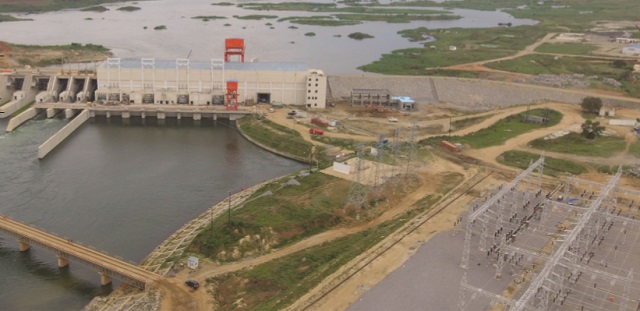
New investors could trigger a drop in electricity costs
Kampala, Uganda | ISAAC KHISA | Uganda’s planned commissioning of the multi-million dollar Isimba and Karuma Hydropower projects on the downstream of River Nile is expected to put government on the spot as sector players expect electricity tariffs to reduce.
The two dams with a combined capacity of 783MW will see the country nearly double its electricity generation to 1,633MW, a development that the government has consistently said will ease electricity tariffs for consumers.
However, a section of consumers say chances of reduction in electricity tariffs are minimal owing to the lop-sided terms and conditions in the power generation agreements that favour investors.
“Many concession agreements between Uganda and generation companies have constant costs like generation, transmission, debt service and staff costs that still have to be paid whether power is consumed or not…it is these costs that inform the final price determination paid by the end users,” said Denis Dan Agaba in reference to the 250MW Bujagali Hydro Power project.
The current electricity tariffs are structured in such a way that even if electricity is not purchased, the money for the Bujagali power dam must be paid.
The US$900million Bujagali Dam was commissioned in 2013 and the investors including the Aga Khan Development Network have up to 15 years to recoup their capital.
Available data shows that Uganda’s installed generation capacity is currently about 850MW – including 100MW from the heavy fuel generators – but effective demand is about 600MW.
This implies that the government pays for the more than 200MW of electricity that is unutilised.
Agaba said consumers were promised lower tariffs for electricity when Bujagali was commissioned but nothing of the sort has so far happened.
“The prices of electricity might even increase given that the conditions for the earlier debt for Bujagali remains and now add on the Chinese debts that will also be required to be paid at the same time,” another source said.
This is happening at the time the government plans to launch the US$570million Isimba Hydropower Dam in March and the US$1.7billion Karuma Hydropower Dam later this year. The two dams were funded with a loan from the China Export Import Bank (China Exim Bank).
It also coincides with the latest consumer tariff schedule of Electricity Regulatory Authority (ERA) for the first quarter of this year that saw domestic consumers pay Shs718.9, down from Shs771.1 per kWh, small scale industries at Shs648.3, down from Shs687 per kWh and medium industrial consumers paying Shs592.5, down from Shs615.3 per kWh.
Electricity tariffs for large scale industrial consumers fell from Shs383.8 to Shs375.5 per kWh while tariffs for street lighting dropped by Shs51 to Shs701.9 per kWh.
But the current electricity tariffs are still higher compared with five years ago. In 2014, domestic consumers whose usage is more than 15 units per month were paying Shs518.6 kWh. Similarly, commercial consumers were paying Shs452.5 per kWh while medium and large industrial consumers were paying an average of Shs450.1 and Shs308.5 per KWh respectively.
Private sector remains optimistic
The private sector that includes big consumers like manufacturers, however, say the electricity tariffs are likely to ease but only if government continues to attract more investors into the country to consume the excess power generated.
“It is true that the additional electricity from the two dams could drive electricity tariffs downwards. However, this will also depend on how government sources for more investors so that more electricity is consumed,” said Moses Ogwal, the policy and advocacy officer at the Private Sector Foundation Uganda.
Martin Kyeyune, the finance and economic advisor at the Uganda’s Roofings Group, the producer of steel products supplied across East Africa, said the mushrooming industries countrywide gives them hope that tariffs will drop once the two dams come on board.
“We are seeing many companies coming up. This is in Kapeeka, Tororo, Namanve, Mbale, among others and we hope this will see electricity tariffs ease,” he said.
Musa Mayanja Lwanga, the Head of Research and Market Development at Uganda Bankers’ Association says evacuation of the additional electricity to the national grid coupled with creating an environment that will attract investments could drive the electricity tariffs downwards.
He said there is a possibility of the low-priced electricity supply in the new dams to subsidise the already highly priced electricity generated from other dams and therefore a reduction in tariffs.
The electricity from Isimba and Karuma hydropower dams is expected to be sold at US$4 cents kWh compared with the US$8 cents from Bujagali hydropower dam.
“The additional electricity could also be exported to the neighbouring countries leading to increase in consumption and a drop in tariffs,” he added.
ERA’s view on electricity tariffs
Julius Wandera, the Communication Manager at the ERA, a government agency responsible for setting tariffs, told The Independent that the electricity generation coming on board from Isimba and Karuma could drive the tariffs downwards as the debt repayment for their construction is not embedded to the tariffs.
“Money for repayment of the loan will come from the treasury and not through the electricity tariffs,” he said.
Even if it is to be embedded on the electricity tariffs, Wandera said the government is putting in all efforts to attract more investors into the country so as to increase electricity consumption and drive the tariffs south.
He said the electricity distributor, Umeme, has also intensified efforts to improve the quality and reliability of electricity to the industries so as to increase on the electricity consumption.
****
 The Independent Uganda: You get the Truth we Pay the Price
The Independent Uganda: You get the Truth we Pay the Price


